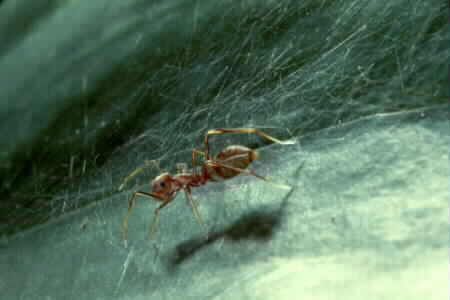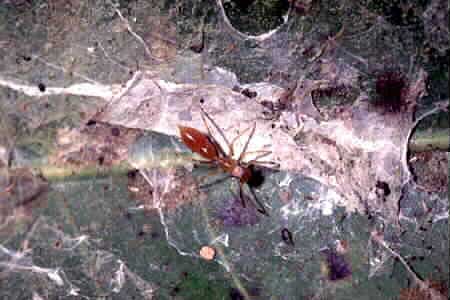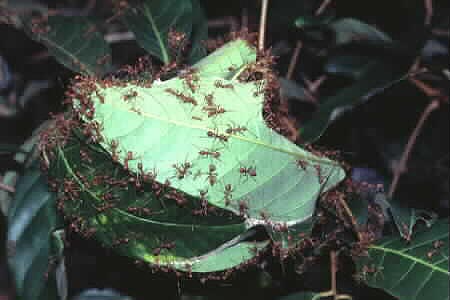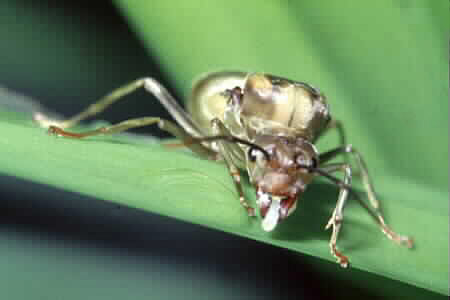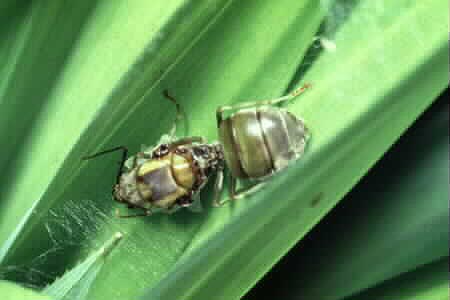The silky distinction
THE ant-mimicking spider Myrmarachne
plataleoides enhances its disguise not only by holding up its front legs like antennae
but also by walking with the unhurried gait of a weaver ant surveing its own territory.
If disturbed, the spider scuttles off timidly to hide under a leaf. However,
when it feels really threatened (for example when someone tries to catch it), it jumps away,
trailing a safety line of silk as it leaps to escape.
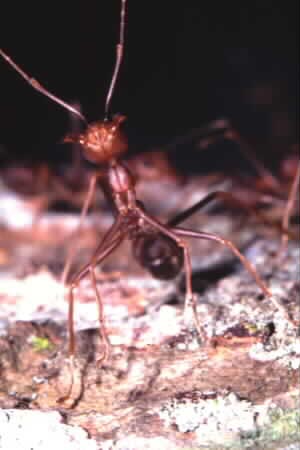 Only spiders produce silk safety line (or dragline) and this exposes the disguise to anyone
unsure whether the creature is a spider or an ant. All spiders produce silk for one purpose or
another, usually for spinning webs, making egg sacs, or wrapping prey.
Only spiders produce silk safety line (or dragline) and this exposes the disguise to anyone
unsure whether the creature is a spider or an ant. All spiders produce silk for one purpose or
another, usually for spinning webs, making egg sacs, or wrapping prey.
Weaver ants do not produce silk, not the adults anyway. They get silk for
“stitching” together their nests of living (green) leaves from a readily available
source – the silk is produced by their fully grown larvae.
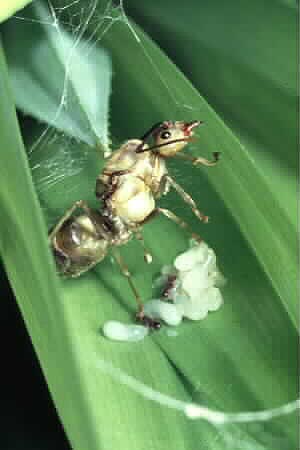 As two teams of worker ants pull the edges of the leaves towards each other,
one worker ant, holding a larva between its mandibles and moving it to and frot like a spindle,
gums the leaf edges together using the silk ‘squeezed’ from the larva.
As two teams of worker ants pull the edges of the leaves towards each other,
one worker ant, holding a larva between its mandibles and moving it to and frot like a spindle,
gums the leaf edges together using the silk ‘squeezed’ from the larva.
The nearly mature larvae of most ant species species produce silk so that
they can spin cocoons as they change into pupae, but weaver ant larvae do not make cocoons
when they pupate!
(This was published in the Malayan Naturalist, Vol 51 No. 1,
August 1997, as a sidebar to the main article “Amazing: Spider Mimics Ant”.)
|







